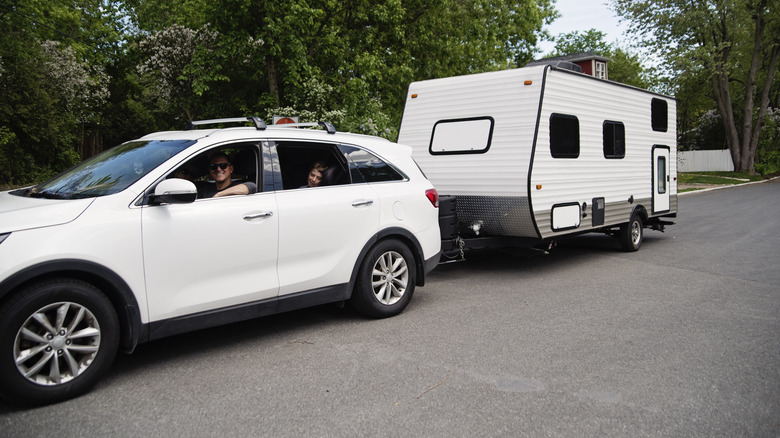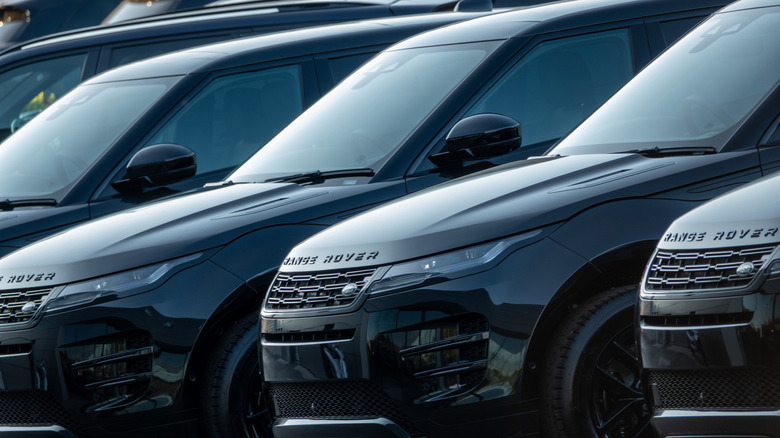Why You Shouldn't Tow With A New Car (And How Many Miles You Need To Drive First)
Testing the capabilities and performance of a new car, truck, or SUV might sound tempting, especially when that new car smell entices the senses to drive hard. However, there's a thing called the break-in period that all factory-fresh vehicles need to undergo. All the parts of a brand new car need some time to settle into their respective roles, including the tires, brakes, driveline, transmission, and the engine. A proper engine break-in period ensures reliable long-term performance and enhanced longevity. Avoiding premature stress is why you should avoid towing heavy loads with a new car or truck, at least until the odometer exceeds the recommended break-in period.
The break-in period will vary according to the make and model of your car. The owner's manual has all the details regarding periodic servicing and the break-in period. For instance, Ford insists on not towing a trailer with a brand-new F-150 until the odometer reaches at least 1,000 miles (1,600 km). On the other hand, BMW recommends staying under 3,500 RPM and not going over 90 mph for brand new diesel cars, and not exceeding 4,500 RPM and 100 mph for gas models for the first 1,300 miles (2,092 km).
How to break in a new engine
The rules for breaking in a brand new engine will differ by manufacturer. It's why consulting the owner's manual remains your best recourse in determining the proper break-in tips for your ride. For instance, some new Toyota vehicles require servicing every 5,000 miles or every six months, whichever comes first. Despite the lengthier duration between the first recommended oil change, which you can do yourself, modern engines still require a break-in period before unleashing their full potential.
Breaking in a new engine means taking it easy with the accelerator pedal. Avoid revving the engine past 4,000 RPM for the first 1,000 miles, allowing engine internals like the piston rings and rod bearings to seat correctly. If your car has a manual transmission, you should avoid hard acceleration until after the break-in period. In addition, taking longer trips is preferred over short jaunts. If you can help it, avoid turning off the engine until it reaches its optimal operating temperature, which should take about 15 minutes, give or take.
Lastly, avoiding using the cruise control during the break-in period is better. The cruise control will keep the engine at a constant rpm, which is not good when breaking in a new engine. It's more advisable for the revs to move up or down while driving, enabling the engine to rev or spin at varying RPMs. You'll be doing your brand new engine a massive favor by keeping the revs low, maintaining slower speeds, and not towing heavy loads during the break-in.

